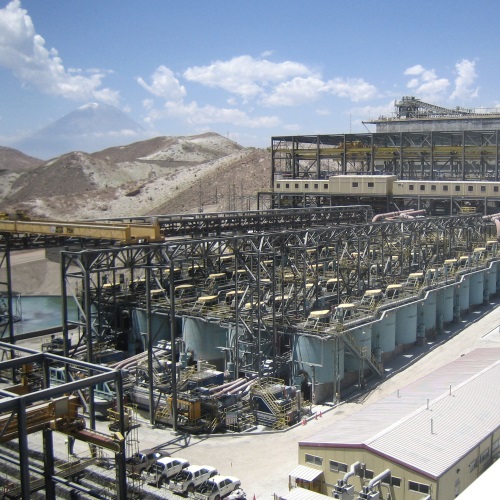04 October 2019
 When it comes to developing advanced solar panels that move automatically to capture the most sunshine or the sophisticated internet of things technologies that, mediated through mobile devices, will monitor the energy output from a windfarm - they’re all reliant on some key minerals.
When it comes to developing advanced solar panels that move automatically to capture the most sunshine or the sophisticated internet of things technologies that, mediated through mobile devices, will monitor the energy output from a windfarm - they’re all reliant on some key minerals.
Low carbon technologies require lithium, cobalt, nickel, manganese, graphite and copper, and just your smart-phone alone contains up to 62 different metals, including rare earths.
Somewhat ironically, it seems it is the mining of metals and the sophistication of minerals processing that will support the technologies that operate alternatives to the large-scale mining of fossil fuels.
And researchers at the University of South Australia are set to play a key role in developing the processes and operations that will ensure future minerals mining is greener and more sustainable than ever – all in a landscape of decreasing ore grades, scarce water supply and energy.
Partners in the new $48 million ARC Centre of Excellence for Eco-Efficient Beneficiation of Minerals, UniSA researchers from the Future Industries Institute will be working to develop new technologies and improved techniques for extracting and processing minerals, that use less water, much less energy and minimise waste.
The new Centre of Excellence is led by the University of Newcastle with Laureate Professor Kevin Galvin as Director, and along with UniSA also includes researchers from Deakin, Monash, Queensland, Melbourne, Curtin and UNSW, a host of international universities from the US, the UK and Chile, the CSIRO and industry partners FLSmidth, AMIRA, Jord and Outotec.
Building on UniSA’s more than 30 years of leadership in minerals processing, Professor William Skinner says support for the Centre of Excellence acknowledges a step-change in the way the business of minerals production is managed.
“The mining and minerals processing industry has always looked for efficiencies, but more than ever, the industry is embracing long-term environmental sustainability and looking at how new technologies and the opportunities presented by Industry 4.0, can advance metals mining to achieve the best outcomes for business and the environment,” Prof Skinner says.
“Our work will focus on improving the speed of minerals separation and making the process more efficient and robust and to do that we will be focussing on better understanding hydrodynamic systems, unique chemistries and the limits of minerals separation.”
Along with Prof Skinner, who is also the Deputy Director, Prof David Beattie and Dr Marta Krasowska form the core UniSA team of CIs in the Centre.
“Together, we bring a platform of expertise in flotation, using bubbles, emulsions and foams and we are hoping to broaden our knowledge of how these processes can be applied more powerfully and selectively to support much faster separations.
“We’re extremely excited to be working with long-term and new collaborators, nationally and around the world, in this venture”.
Prof Skinner says the long-term goal of the seven-year research collaboration will be to hit some important targets.
“Our ‘holy grail’ is to develop a highly productive but zero-emissions mine,” he says.
“We certainly have a target to double energy and water efficiency by 2030.
“Our second goal is to really reduce the loss of high value metals during minerals processing. Our target is to cut that loss by 90 per cent because the demand for key metals is escalating and we need to find ways to meet that demand, while respecting the planet.”
UniSA media contact: Michèle Nardelli phone: +61 418 823 673 or +61 8 8302 0966 email: michele.nardelli@unisa.edu.au



